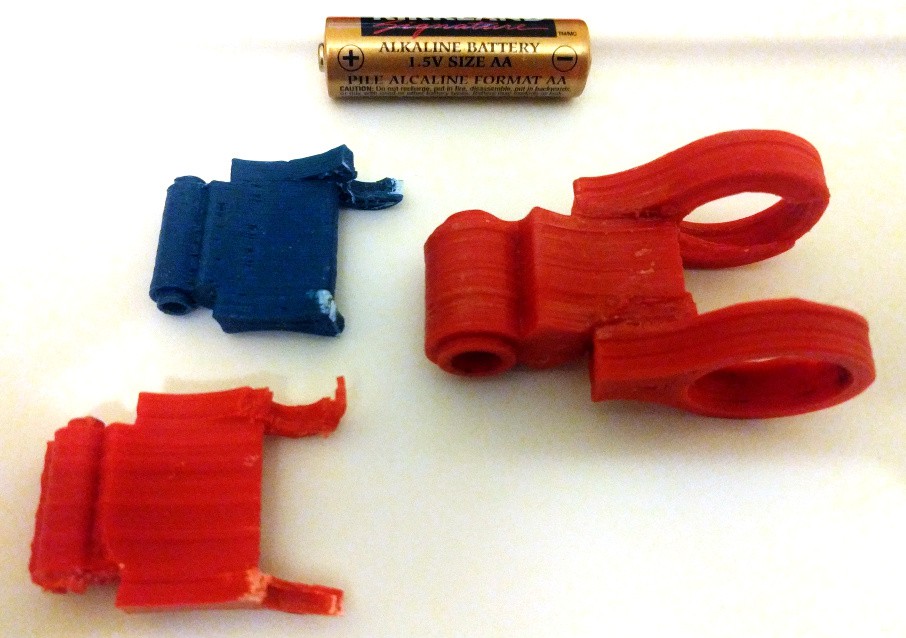Over the last few years, these arm floats have broken more times than I can count. Whenever a part breaks, I try and understand why it broke, and redesign it to make it better. That's definitely a huge advantage to the 3D printer for something like this. It's so easy to make a small modification and spit out a new design.
I originally used the same "small" chain design for both the shoulder joint and the elbow. It became quickly apparent that the relatively small plastic pieces simply were not suited to the extreme forces put on the shoulder joint-- with all of the weight cantilevered beyond them.

Here, on the left, you can see a couple of the older small chain pieces that were previously used for the shoulder joint. They've both catastrophically failed where they hold onto the small bearing. On the right, you can see the newer "big" chain that uses 608Z bearings. These are *much* stronger and can take quite a bit of abuse. But, they're definitely not immune to breakage. As the rest of the arm floats have been upgraded, I've started to see more failures in this part, as well.

The "z-rods" are also an area that needed some significant improvement. You can see an early version of the rod on the bottom (in red). While the bulk of the load these rods face is vertical, there is also a significant load imposed by the rubber bands that tends to bend and twist these rods. The early z-rods I was using would tend to deflect noticeably, which caused a number of problems. To better handle these loads, I made these much thicker, as you can see in the yellow part in the middle. It's almost three times as thick, and any flex caused by the stresses of the rubber bands is negligible. On the upper image, you can see that the current z-rod is now longer as well. This is mainly to improve the amount of vertical travel in the arm floats.
 Mike Turvey
Mike Turvey
Discussions
Become a Hackaday.io Member
Create an account to leave a comment. Already have an account? Log In.